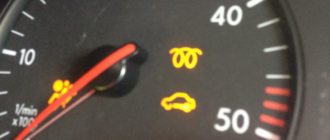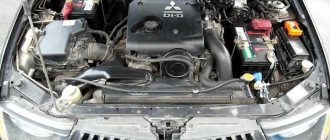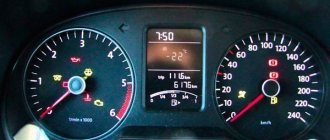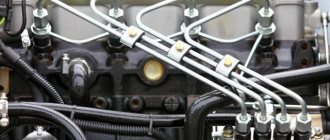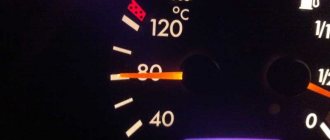Changing filters
Let's not criticize the quality of fuel at gas stations. It is important for us that there is almost no way to check this parameter in advance. Well, of course, if the paraffin does not fall out of the filling nozzle in pieces. But if there is water or sand in the fuel, all hope lies in the filters, which are highly recommended to be replaced in the fall. At a minimum, drain the water (or make sure there is no water) if the design of the fuel system allows for this possibility. In general, we read the manuals, look for filters (pay attention to their number), change them. The air can be waved for company. For perfectionists - salon too.
Useful tips
Experienced drivers advise using kerosene as an additive. It is diluted in a ratio of one to ten. Kerosene is not harmful to a diesel engine. And the effect is the same as that of specialized additives. The product will make diesel fuel more liquid, and excess substances will evaporate through the crankcase ventilation system. If you don’t have a burner or kerosene with additives at hand, you can heat the filter using improvised methods. For example, boiling water from a kettle, or a hairdryer. This is especially true for cars with plastic fuel lines. Under the influence of high temperatures, the diesel fuel will become less thick, and you will be able to successfully start the car.
And candles...
Where do spark plugs come from in a diesel car? They are there. These are glow plugs that heat the combustion chambers before starting the engine. Actually, if they work, then there is no need to change them, but if not, it is critically important to replace them. Why do they get so much attention, since it’s generally logical to replace broken parts? Because in the summer, faulty spark plugs may not be noticeable, but during the first cold weather it will cause the engine to not start. So we check if everything is okay with them.
What can be replaced
For a gasoline engine, it is enough to inject 1 cubic meter of 95 gasoline for easy starting. But this will not help for a diesel engine. What can replace such a launch? It is recommended to use a silicone lubricant spray, which is usually used to treat plastic or rubber elements in the car interior. It contains flammable, rapidly evaporating substances and silicone. Suitable for one-time use in a critical situation. However, when the components included in its composition burn, solid substances are obtained that act as an abrasive, causing scuffing of the metal. Therefore, its frequent use is extremely harmful to engine parts.
Let's warm ourselves up
A felt blanket or a car blanket, any kind, even the standard plastic protection of the engine compartment from below and the notorious cardboard in front of the radiator, is a must-have. On other cars, without all this, the engine may reach operating temperature about twenty minutes after the start of the trip. Well, the stove won’t start heating up soon either.
Battery
Diesel cars use more powerful batteries. It is more difficult to turn such an engine, if only because of the high compression, which is about twice as high here as on a gasoline engine. Plus frozen oil, loss of electricity in the cold... In short, winter should be met with an ideal battery with a capacity no lower than that prescribed by the car manufacturer. By the way, how many of them do you have there? Two? We clean the terminals, measure the density of the electrolyte, and visit a familiar electrician. The last two points are rather in reverse order.
Compression
This is one of the main factors that affects the quality of the launch. Diesel units differ from gasoline units in having higher compression and compression ratio. Let's look at how this factor affects the start of the power unit:
- Compression up to 18. This is a very low figure. In this case, operating a diesel engine in winter is impossible. The car cannot be started even “hot”.
- From 20 to 24. In this situation, the car can be started, but only in a warm box. If it sits outside overnight, it will be extremely difficult to start it.
- About 25. Here the unit can operate at temperatures down to minus 10 degrees Celsius.
- Compression 26-30. The start-up temperature drops to minus 15 degrees.
- 32 and above. This is normal compression that a working diesel car should have. Such a power unit will start without problems at a temperature of minus 20-30 degrees Celsius.
As you can see, the compression ratio significantly affects how the engine performs in winter. The higher it is, the greater the chances of a successful launch.
Oil
Nothing special here. If the time has come, then change the engine oil to a thinner one, one of those specified in the instructions. In short, meeting the winter with oil where the first number in the 5W40 type marking is higher than five is not a good idea. Five, in particular, means that the minimum temperature at which it is possible to pump lubricating fluid through the system is 35 degrees below zero, and in this case you should not turn the engine with the starter after minus thirty. If you get started, of course!
Fuel
We have it in sixth place, but it can easily jump to first if you fill something wrong. We know summer and winter, but no one knows what will flow from the refueling nozzle under the guise of one or the other. All hope lies in the good name of the gas station. The closer the gas station is to civilization, the higher the hope. In the outback there may be no choice. And in big cities too. Just remember Almaty in the fall of 2017, when low-quality fuel purchased at various gas stations was consumed even at a slight minus. We look at the weather forecast and choose how much summer to pour into the tank. In winter, you can safely fill it full.
According to Technical Regulation 013/2011 of the Customs Union “On the requirements for automobile and aviation gasoline, diesel and marine fuel, jet fuel and fuel oil,” information about the name and brand of fuel, including the environmental class, must be posted at gas stations in places accessible to consumers, and information about the brand of fuel is reflected on fuel dispensing equipment and in cash register receipts. At the consumer's request, the seller is obliged to present a copy of the fuel quality document (passport).
The rules for labeling diesel fuel are specified in Appendix 1 to TR CU 013/2011. The marking consists of a group of characters arranged in a certain sequence separated by a hyphen:
- letters DT (diesel fuel);
- the letters L (summer), Z (winter), A (arctic), E (interseasonal), indicating the climatic conditions of use;
- symbols K2, K3, K4, K5, indicating the environmental class of diesel fuel.
The brand designation may include the manufacturer's trademark.
Glow plugs
Gasoline engines use spark plugs to ignite the mixture. A diesel engine is designed differently. To start and operate it, no additional spark is required - the mixture ignites due to a high degree of compression. But modern manufacturers equip diesel engines with auxiliary elements. Among them is a glow plug. It heats the diesel fuel to make the launch more successful.
This is especially true in winter. How to start a diesel engine correctly in severe frost? To do this, you need to wait until the spark plug heats the fuel. Turn the key to the third position. The indicator light on the instrument panel will light up. It is usually red or yellow. After a few seconds it will go out. As soon as it stops burning, start the engine. This way, you allow more time for the spark plug to heat the fuel better.
They sent something wrong
You can increase the freezing point of summer diesel fuel by adding antigel to it. There are many such compounds; they are sold at most gas stations, but it is better for a diesel engine driver to have one with him. And here (attention!) you can’t just splash anti-gel into frozen diesel fuel. More precisely, it is possible, but it will not work. Any instructions say that the additive must be mixed with liquid diesel fuel. In other words, in advance. A life hack from experienced diesel drivers will come in handy: in the enze you need to have not a jar of anti-gel, but a bottle with one and a half liters of kerosene in which the anti-gel has already been diluted. The chances of bringing the contents of the tank to life by pouring such a cocktail into it are much higher. Diesel fuel can also be diluted with simple kerosene in a ratio of 1/10, but, say, in situations where there are signs of freezing of the fuel or a very severe frost is approaching.
It is interesting that, according to Appendix 3 to TR CU 013/2011, which lists the requirements for the characteristics of diesel fuel, the filterability temperature limit (this parameter actually determines the temperature limit of its use) for summer diesel fuel is not determined at all. For off-season in all countries of the Customs Union this parameter is -15, and for winter -20 degrees Celsius. But... not in Kazakhstan. For Kazakhstan these are -5 and -15, respectively.
Why is it difficult to start a diesel engine in winter?
A drop in ambient temperature below 0°C causes the oil to thicken, fuel to evaporate less quickly, and the battery to discharge faster. In addition, diesel fuel tends to become waxy in the cold, and because of this, difficulties arise with pumping through the power system.
This problem especially often arises in the off-season, when daytime temperatures are still quite high, and at night the thermometer drops to negative levels. If the car owner has not changed the fuel to winter fuel and continues to drive on summer diesel fuel, this can lead to a typical situation - in response to turning the ignition key, the engine shows no signs of life.
The reason may be not only the inattention of the driver, but also the dishonesty of the gas station owners. After all, winter diesel fuel is more expensive, so dishonest sellers are often in no hurry to change it before stable frosts hit and sell summer diesel fuel at an inflated price. The problem also lies in the fact that it is impossible to identify a forgery based on organoleptic analysis alone - the fuel does not differ either in appearance or smell.
Additional equipment
You can install many different heaters on a diesel, as well as a gasoline, car. For diesel engines, heating the fuel intake, fuel line, fuel filter, flow-through fuel heaters, as well as various universal “boilers” for antifreeze operating from a household electrical network and autonomous heaters are relevant. Experienced installers of such systems usually have recommended solutions depending on the vehicle model. And the apotheosis of preparation for winter can be the installation of a gasoline autonomous heater on a diesel engine, the kit of which will include an additional tank for gasoline, a filler neck, pipelines or the need to make a tank from stainless steel, as well as, in especially severe cases, inserting a second fuel hatch into the fender of the car . This is a difficult and expensive path, which, however, is followed by other SUV owners. But then they can consider themselves ready for anything.
But additional electrical equipment has one drawback, which refers us to point two - the risk of getting a warmed-up car, but with a completely drained battery. And then another battery and a separate charging system for it are added to the list of necessary items. True, this is a completely prohibitive level of preparation. Although in such a car you can go off-grid even for the whole winter, and cut the summer diesel fuel into bricks and put it in a trailer.
Why you can’t start a diesel engine in winter “from a pusher”
This method is undesirable not only in the cold season, but also in the summer. Modern diesel passenger cars do not handle jerks well. And in a frozen state they are even more sensitive to mechanical damage. When using this method, there is a high risk of bending the valve stems or tearing the actuator. As a result, expensive repairs will be required.
To avoid difficulties with starting a diesel engine in cold weather, it is recommended to leave the car overnight in a warm parking lot and be sure to monitor the condition of the spark plugs and the battery charge level. Paying close attention to your car will help you avoid most problems.
About a kettle for dummies
Sudden frost, summer diesel in the tank - the engine does not start. What to do? Pour a cocktail with anti-gel into the tank, rock the car from side to side (we're not talking about trucks, right?). And go get a kettle. Drinking tea until it warms up is a good idea, but you can splash boiling water on the fuel equipment (or get a bottle of hot water from the tap). Often after this procedure the car starts. It is worth mentioning that not all cars have fuel equipment in the usual sense. For example, pouring boiling water over an injector pump will not work.
How to start a diesel engine in cold weather? Ether in aerosol
Surely you have heard about such means as “easy start”. These products come in small aerosol cans. They are useful because they can start a diesel engine even in extreme conditions. The product contains flammable substances. Due to them, the engine starts “easy”. The mixture begins to burn earlier - the chances of a successful start increase several times. But it is worth remembering that in large quantities, flammable substances harm the diesel engine. Therefore, this product should be used only in emergency situations.
How to start a diesel engine in cold weather using “easy start”? To do this, unscrew the air filter housing, or better yet, remove the pipe. We begin to spray the composition directly into it. At this time, the assistant turns the starter. The engine will start easily.
Scary?
We unwittingly collected almost all the horror stories for diesel drivers. But if you look at it, the main recommendations boil down to keeping the car in good working order, performing all routine maintenance on time and refueling with high-quality fuel. With the latter, of course, sometimes difficulties arise. And even taking this into account, many car owners, when preparing their cars for winter, rarely move beyond the fifth point. Still scared? Then pay attention to the item “additional equipment”. By the way, we plan to develop the topic of additional equipment on the pages of our publication.
